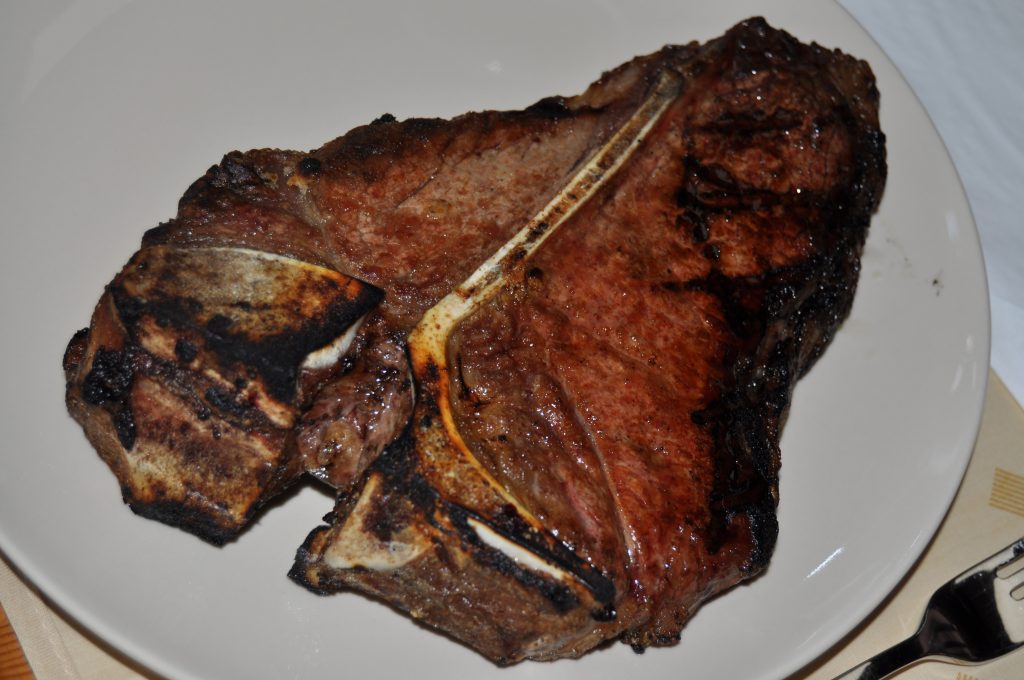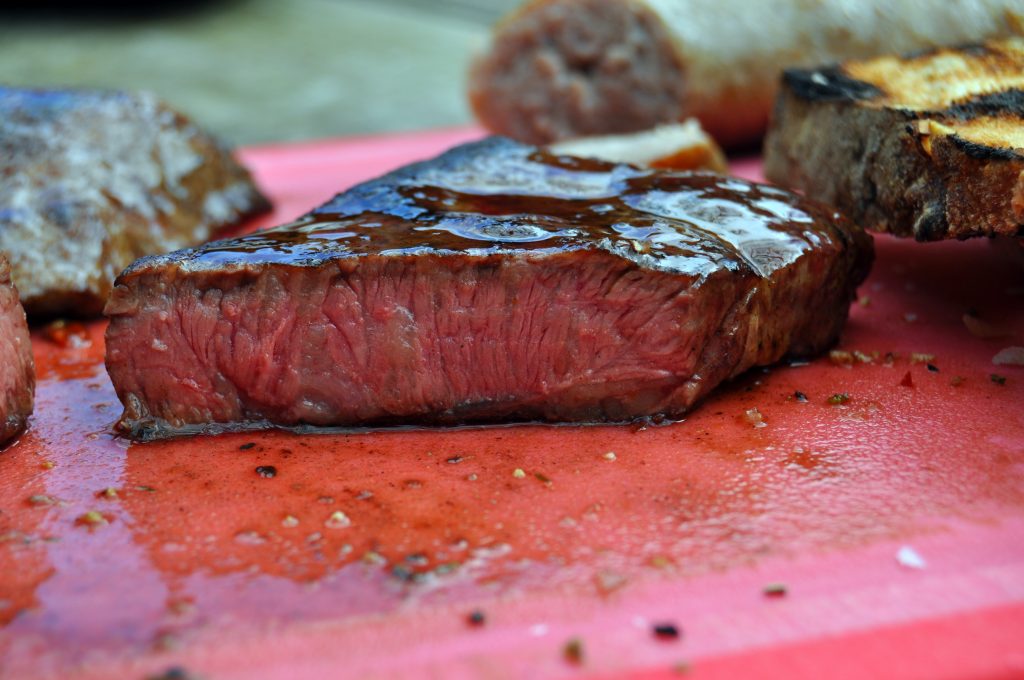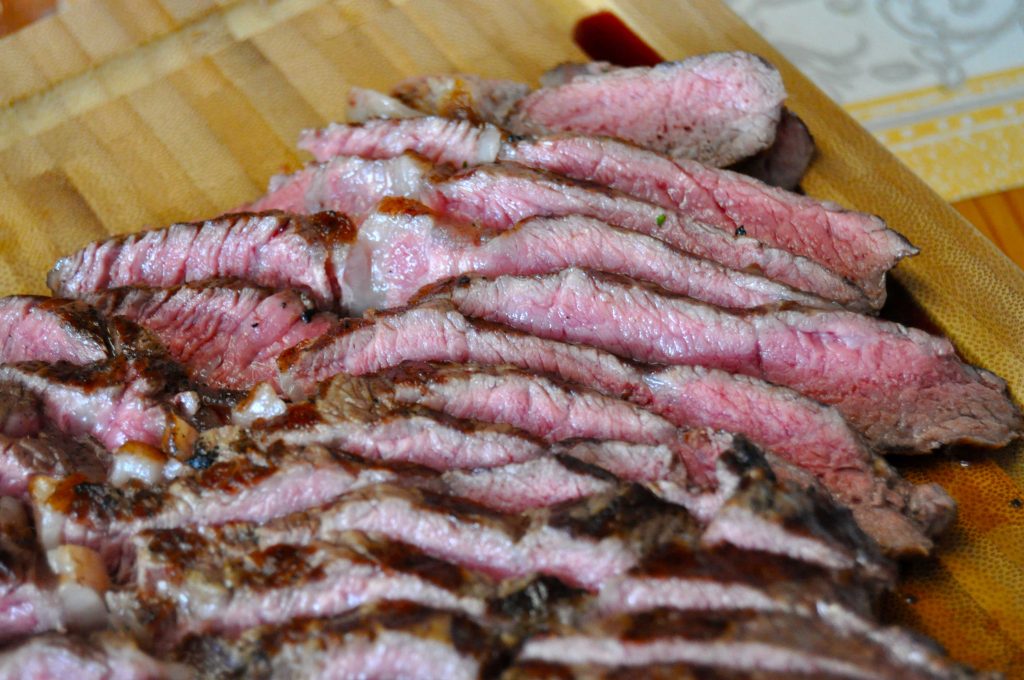They’re a classic, especially in the United States: steaks. There are over 50 different steak cuts, all of which have different characteristics and are prepared differently.
Man has been roasting cuts of meat ever since he learned how to use fire: All that is needed to prepare a steak, other than a piece of meat, is a heat source. Although the “steaks” of prehistoric times had little to do with the steaks of today, meat roasting itself is as old as the human species.
The first cattle
About 4,000 years ago, man bred the first cattle in Macedonia, Crete and Anatolia: however, these animals were much larger than those bred today and have long since died out.
There are hundreds of different breeds of cattle, but only about 30 breeds are bred for human consumption. The quality of a beef depends predominantly on how it was raised, how it was fed, and the age at which the animal is slaughtered.
Cooking stages of a steak
Preparing a steak is an art: whether you have it served in a steakhouse or prepare it yourself on a grill, there is always experience and expertise behind the preparation of a tender steak.
Starting with the cooking levels: Every steak lover prefers a different cooking level.
The cooking stages of steaks are divided as follows:
- Rare – core temperature max. 45 degrees Celsius
- Medium rare – core temperature max. 55 degrees
- Medium – core temperature between 55 and 60 degrees
- Medium Well – core temperature between 60 and 65 degrees
- Well Done – core temperature above 65 degrees.
A steak that has a core temperature above 65 degrees is considered well done. Up to a core temperature of 60 degrees, the steak is still slightly pink inside.
It is also true that the higher the core temperature, the more fibrous the meat structure becomes.
But when preparing a steak, it’s not just the cooking levels that matter: The choice of meat is also crucial.
With a classic beef, there are cuts that are particularly tender – other cuts, on the other hand, are harder and less suitable for short-roasting.

Wagyū cattle
Wagyū beef is an exception: here almost every piece is suitable for short roasting. Wagyū beef is a Japanese breed of cattle. Wagyū beef is characterized by an overall marbling of fat in the muscle meat, whereas in classic beef the fat is spread in spots in the meat.
The Wagyū cattle which are raised in the Kobe region of Japan find their way onto the market as particularly exclusive Kobe cattle. Japanese Kobe cattle are fed on natural feed and beer, and they are also massaged daily in order to minimize the fat cover and to highlight the marbling.
Tenderloin: Tender and desirable
With the common beef, it is mainly the parts of the back that are less used that are suitable for grilling: Here, the tenderloin, the most precious and tender piece of meat on beef, is most sought after.
The Tenderloin only accounts for just under two percent of a cattle, which is why it is often not easy to get hold of a tenderloin steak.
But there are plenty of beef alternatives that can also be grilled: A T-bone steak, for example, contains a large roast beef portion and a small bone-in tenderloin portion. The porterhouse steak is cut similarly, but with a larger filet portion than the T-bone steak.
In addition to classics like T-bone steak, there are countless other cuts of beef that are suitable for short roasting.
Types of cattle
In general, ox meat is considered the best beef: oxen are male castrated cattle that are slaughtered at the age of 20 to 30 months and give marbled, fine-grained and tender meat.
Next is heifer meat: a heifer is a young female cattle that has not yet given birth. Similar to the steer, a heifer is slaughtered at the age of 20 to 30 months and accordingly yields similarly tender meat.
Next in the hierarchy is young bull and cow meat: this meat is often less fine-grained and more austere in flavor. Tender grilled meat comes mostly from the steer and heifer.
Aroma and tenderness at the same time – is that possible?
One thing is for sure: tender cuts of meat come predominantly from those parts of the beef body that are moved little. On the other hand, particularly tender cuts of meat such as the tenderloin offer less aroma: more movement provides more blood flow to the respective body area, which leads to a stronger aroma.
There are steak cuts that combine flavor and tenderness: The Flat Iron Steak is an example of a steak cut that offers flavor and tenderness at the same time.

Flat Iron Steak
Flat iron steak comes from the shoulder of beef – an area that usually gets moved around a lot. Normally, that means lots of flavor, but little tenderness.
However, the shoulder contains two muscle sections that are as tender as a tenderloin: This is what the Flat Iron Steak is cut from.
For a long time, the Flat Iron Steak remained undiscovered: The problem was a thick tendon in the shovel piece of beef that remained hard during short roasting. For decades, meat from this area was sold as braised beef: It wasn’t until the potential of Flat Iron Steak was recognized and the steaks were sold sinewless that Flat Iron Steak advanced to become a successful product.

Preparation of a steak
If you want to prepare a steak on the grill, you first sear it for a few minutes on all sides to create a crust. If you work with a cast iron grill, a typical steak branding will show up. Then place the seared steak in an indirect heat zone and let it rest: How long you should let a steak rest depends on your preferred cooking level and the thickness of the cut of meat. A core thermometer can help you achieve the desired cooking level.
But you don’t have to grill a steak: If you catch the fat in a pan as it browns, it can be used to make a flavorful sauce to serve with the steak.
Steak preparation is a culture in its own right: it is not without reason that there are steakhouses all over the world dedicated solely to the preparation of steak.
Searing meat over a heat source has a long tradition in the history of mankind. The tasteful preparation depends on many factors: In addition to the quality of the meat, experience and knowledge count in bringing a steak to perfection.
Cover picture: Slicing of a T-Bone Steak, © Simon von Ludwig, all rights reserved.

 Deutsch
Deutsch